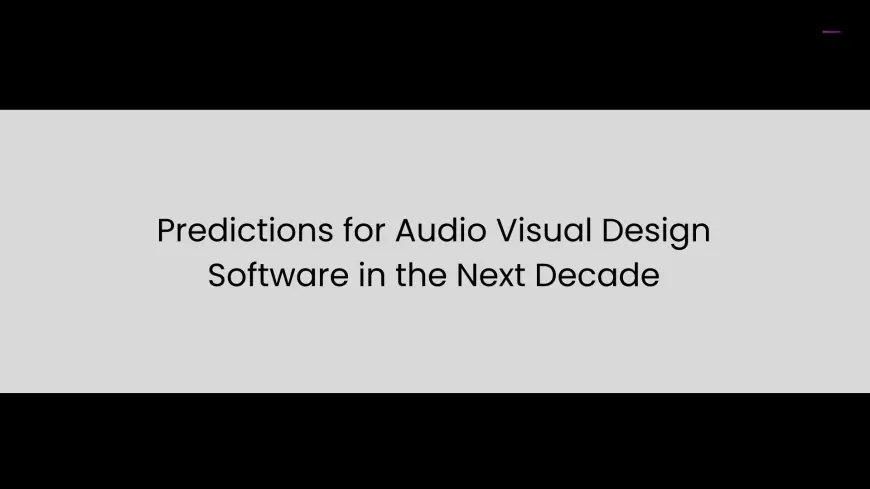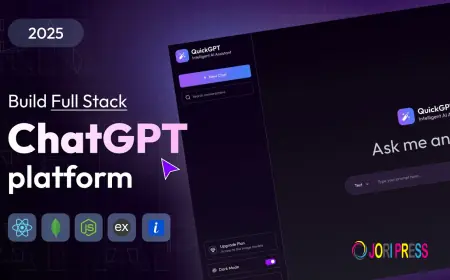Predictions for Audio Visual Design Software in the Next Decade
In this blog, we will explore key predictions for Audio Visual Design Software in the next ten years and examine how these trends will reshape the way AV professionals design and deliver solutions.

XTEN-AV is leading the charge in shaping the future of AV design by developing tools that empower consultants, integrators, and engineers to work smarter and faster. As the audiovisual industry evolves, so do the tools that professionals rely on. Audio Visual Design Software has already transformed how AV systems are planned, documented, and implemented. But the next decade promises even more significant changes, driven by advancements in artificial intelligence, automation, cloud computing, and immersive technologies.
In this blog, we will explore key predictions for Audio Visual Design Software in the next ten years and examine how these trends will reshape the way AV professionals design and deliver solutions.
Introduction
AV projects are becoming increasingly complex. Corporate boardrooms, educational institutions, entertainment venues, and smart buildings require sophisticated systems that integrate displays, audio, lighting, control systems, and networking infrastructure. Traditional design methods are no longer sufficient to meet client expectations or project timelines.
Audio Visual Design Software has revolutionized this landscape by offering features like drag-and-drop schematics, preloaded device libraries, automated wiring diagrams, and 3D visualizations. Consultants and integrators can now create professional-grade designs more quickly and accurately than ever before.
Looking ahead, we can expect this software to evolve in ways that make AV design even more intelligent, automated, and integrated with broader technology ecosystems.
Prediction 1: AI-Driven Design Recommendations
Artificial intelligence will become a central component of Audio Visual Design Software. AI algorithms will analyze room dimensions, acoustics, lighting conditions, and usage requirements to provide optimal design suggestions.
For example, the software may automatically recommend speaker placement, camera angles, display sizes, and control system layouts based on the specific characteristics of a space. AI will also help predict potential design conflicts, such as signal interference or insufficient audio coverage, reducing errors before installation begins.
This will save consultants significant time, enhance accuracy, and allow them to focus on strategic decisions rather than manual calculations.
Prediction 2: Automation of Repetitive Tasks
Automation is already a feature of modern AV design platforms, but the next decade will bring even more advanced capabilities. Tasks such as generating wiring diagrams, equipment schedules, bills of materials, and client proposals will become almost entirely automated.
Audio Visual Design Software will also integrate with procurement systems to automatically suggest compatible products and check availability. This level of automation will streamline workflows, reduce the risk of errors, and speed up project delivery, allowing consultants to handle more projects simultaneously.
Prediction 3: Enhanced Cloud Collaboration
Remote work and distributed project teams are now the norm, and cloud collaboration will become a standard feature in the next generation of Audio Visual Design Software.
Cloud-based platforms will allow multiple stakeholders, including architects, IT teams, facility managers, and clients, to work on the same design in real time. Updates made by one team member will instantly reflect across the project, ensuring that everyone is aligned and reducing communication delays.
Furthermore, cloud platforms will support version control, audit trails, and real-time feedback, making collaboration more efficient and transparent than ever before.
Prediction 4: Integration with Building Information Modeling (BIM)
Integration with BIM systems will be a game-changer for AV design. BIM allows architects and engineers to create detailed digital representations of buildings, including structural, mechanical, and electrical systems.
Audio Visual Design Software integrated with BIM will enable consultants to design AV systems directly within these models. This ensures that AV layouts consider structural constraints, cable routing, and coordination with other building systems. The result will be more accurate, feasible, and coordinated installations, reducing costly rework and delays.
Prediction 5: Immersive Visualization and Virtual Reality
The next decade will see AV Design Software incorporating immersive visualization technologies such as virtual reality (VR) and augmented reality (AR).
Consultants will be able to walk clients through a fully rendered boardroom, auditorium, or lecture hall before any equipment is installed. VR and AR will allow stakeholders to experience audio coverage, sightlines, and display positioning in a virtual environment, improving decision making and speeding up approvals.
This immersive approach will also enhance training for installers, providing a hands-on understanding of complex systems before they arrive on site.
Prediction 6: Data-Driven Decision Making
As buildings and AV systems become more connected through IoT devices, Audio Visual Design Software will leverage data analytics to make smarter design decisions.
For instance, software could analyze past usage patterns, occupancy data, and environmental factors to recommend equipment and layouts that optimize performance and energy efficiency. Predictive analytics will also help anticipate maintenance needs and system upgrades, ensuring long-term reliability and client satisfaction.
Prediction 7: Mobile and On-Site Capabilities
Mobile devices and tablets will become integral to AV design workflows. Consultants will be able to access project designs, modify layouts, and present visualizations directly on-site.
This mobility will allow real-time adjustments based on physical space conditions, client feedback, or unforeseen constraints. On-site capabilities will reduce back-and-forth communication and ensure that designs remain accurate throughout the project lifecycle.
Prediction 8: AI-Powered Cost Estimation and Proposal Generation
In addition to design, AI will enhance project planning and budgeting. Audio Visual Design Software will automatically calculate costs based on selected equipment, labor, and installation complexity.
Consultants will be able to generate client-ready proposals in minutes, complete with schematics, 3D visualizations, and detailed equipment lists. This will not only save time but also improve accuracy and client confidence, making it easier to win projects.
Conclusion
The next decade promises a remarkable evolution in Audio Visual Design Software. AI, automation, cloud collaboration, immersive visualization, BIM integration, and data-driven insights will transform how AV professionals design, document, and deliver projects. These advancements will allow consultants and integrators to work faster, reduce errors, enhance client experiences, and ultimately stay competitive in a rapidly changing industry.
XTEN-AV continues to lead the way by providing innovative AV Design Software that embraces these future trends. By adopting these tools, AV professionals can prepare for the next decade with confidence, ensuring that their designs are smarter, more efficient, and aligned with the cutting-edge demands of modern AV projects.
Read more: https://gwendpots.substack.com/p/the-complete-guide-to-av-design-software
What's Your Reaction?
 Like
0
Like
0
 Dislike
0
Dislike
0
 Love
0
Love
0
 Funny
0
Funny
0
 Angry
0
Angry
0
 Sad
0
Sad
0
 Wow
0
Wow
0



















































